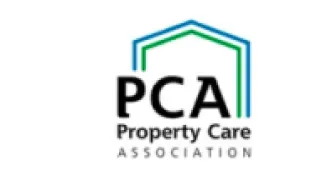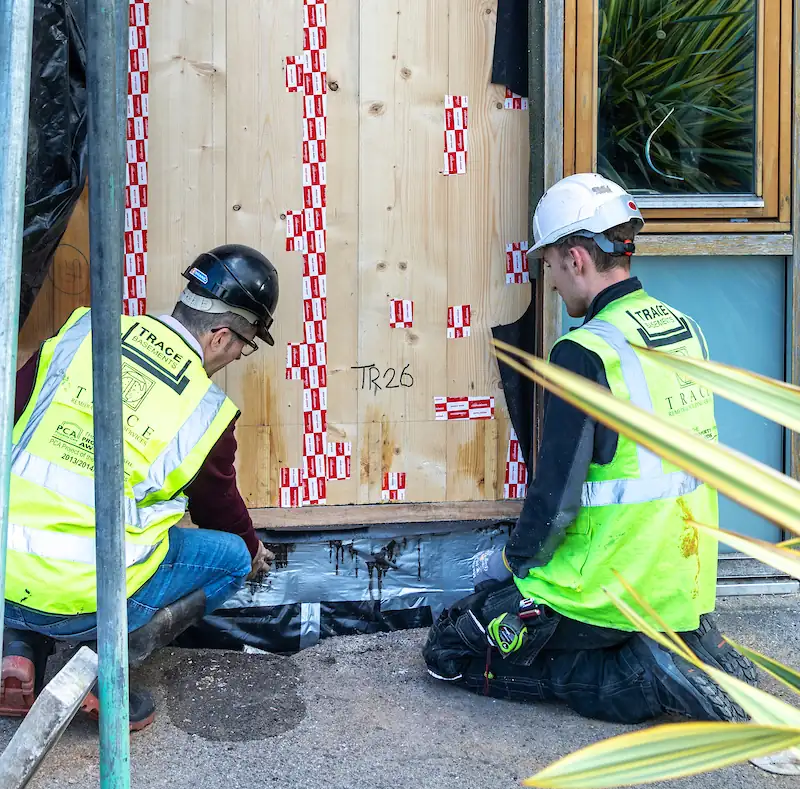Damp Proofing Specialists
Get in touch

Issues of dampness within buildings can be caused by many factors, including the rise of moisture by capillary action. Below we explain some of the typical causes of issues.
Damp specialists in rising damp issues
‘Rising damp’ is the movement of moisture up through building material as a result of capillary action, whereby the surface tension of water draws it through the pores present within building materials; much like blotting paper or indeed kitchen towel absorbs/wicks water through the same physical process.
While simplistically this is ‘rising damp’, there is much more to understand in correctly diagnosing and ‘damp proofing’ such issues associated with movement of moisture via capillary action.
While simplistically this is ‘rising damp’, there is much more to understand in correctly diagnosing and ‘damp proofing’ such issues associated with movement of moisture via capillary action.
We include below some example considerations relating to rising damp and remedial damp proofing works.
While this might be considered specialist knowledge, we simply want you to appreciate that we are experts in the field and are well placed to advise.

Damp - is it a myth?
You may have heard that rising damp is a myth, i.e. that it does not exist, well it is the means by which water is accessing the structure, that is important to identify.
Where to focus
As damp specialists in Manchester, we inspect for rising damp, the most important thing to do is to determine what it isn’t before diagnosing what it is.
Defects
Typical defects causing symptoms of rising damp commonly include the same factors time and time again, which is where the myth factor arises, including:
Leaking drains
Useful links
Waterproofing design
Dealing with failed waterproofing systems
Waterproofing design
If property drains constantly or commonly leak water in or around a structure, then conditions for rise of dampness will be exacerbated, and unless the masonry is extremely dense or a 100% effective dpc is present, dampness will inevitably migrate up onto the ‘dry’ side to show wet the low level walls in the occupied environment.
As an aside in such cases, if water leaks had not been present but the dpc was less than 100%, the dampness may never have risen to test the dpc, so would one advise for remedial damp proofing if the dpc was known to be less than perfect?
Plaster bridging over the D.P.C. (damp proof course) down to a solid floor
Moisture from the floor surface, from within the floor or from within the interface between the floor and wall, can migrate into the bridging plaster to rise up it to show typical symptoms of rising damp, which while present, in not having risen up through the wall structure itself, is not TRUE RISING DAMP.
Such problems can be addressed by cutting back the bridging plaster, cleaning out the wall and floor joint, pointing that up to limit or prevent escape of vapour, followed by fitting skirting boards to hide the cut back plaster.
Variations on this may occur, in that depending on how high the visible dampness has risen, whether the plaster has degraded and whether it is contaminated by hygroscopic salts, then the plaster may be removed higher up the wall to cater for such, usually replaced with a plaster that blocks movement of salts while allowing the walls to breathe and dry down if required.
So, if one has a wall where such conditions are proven at the time of inspection and consideration of proposed remedial works, and particularly if the wall itself is actually damp, with such proven with say a calcium carbide Speedy Moisture Meter, is it damp because of the bridging problems or because of dampness rising in the wall as well?
Determining such is very difficult without taking many in depth profile tests, checked in a laboratory at a cost, so it is not practical to do so in most cases. So what should one consider as being reasonable?
In ideal cases one would be able to undertake the repairs in respect of the bridging plaster, but limit plaster disturbance and then leave the wall for a reasonable period to dry down, with guidance on this generally being to allow for one month per 25mm thickness of the wall, including the plaster, so in most cases even with a 150mm thick construction, six months is the minimum.
In common practice such does not occur because most clients seek to deal with the problem there and then, preferring to accept replacement of damaged plaster and installing a remedial damp proof course in a given wall rather than solely addressing the bridging factor at risk of having to disturb the wall again at a later date if it does not dry out.
External render bridging the damp proof course:
Moisture migrating from the ground and from rain-water splash back will commonly transfer into a wall above damp proof course level, if the latter exists, to cause symptoms of rising damp, so again is this TRUE RISING DAMP or not..?
It is not if taken in isolation but it can again, as with those internal factors mentioned, cause a wall to become wet at low level, and contaminated by hygroscopic salts, again raising the quandary of whether the wall would dry down if the bridging render is solely cut back to a safe height above ground/dpc level, or whether one should also undertake internal opening up of any degraded, perhaps salt contaminated, plaster.
In addition, if the body of the wall is proven as damp, should a remedial damp proof course be installed just in case it does not dry down, or can the client allow the time to monitor conditions before deciding whether one should be installed and as indicated elsewhere, such may be involve a period of at least six months.
This information is by no means exhaustive and will be expanded upon when time allows, however we include below a more basic listing of other damp proofing related considerations and pitfalls we commonly encounter and advise upon, often in Manchester & the North West. Much of the information relates to mistakes made during refurbishment of properties where poor practices actually cause problems to occur where they did not exist beforehand, which is more common than you may suspect.
Use of plasters in association with a remedial damp proof course that:
a) act as a vapour barrier, such as a tanking specification that blocks both water and water vapour.
This prevents walls from drying out laterally through the plaster in a controlled manner, causing it to instead rise higher, moving hygroscopic salts upwards with it, commonly into previously dry original, causing it to spoil by attracting moisture from the atmosphere during times of high humidity. In such cases, while the ‘True Rising Damp’, if such was present in the first place, may have been halted by a remedial damp proof course, the new higher salt contaminated damp line caused by incorrect use of a tanking medium in the plaster will inevitably result in ‘hygroscopic dampness’ in a line over the top of the renewed plaster. In one worst case scenario in a stone property, I have seen such dampness driven fully up to first floor level simply because the dampness rising up from the ground was totally blocked in applying a tanking medium containing plaster up to that height.
The only effective remedial measure is to remove the plaster to allow the walls to dry out, either applying a breathable plaster specification that also blocks movement of salts, or dry lining in a manner that allows no plaster to come into contact with the walls, and where space is at a premium, with the option to apply a cavity drainage membrane, usually meshed so that plaster of almost any type can be applied at minimal profile.
Incidentally, such a specification using cavity drainage membranes is the safest option when buildings have flooded because the wet walls can dry down gradually without plaster spoiling.
b) do not inhibit hygroscopic salts.
This will allow moisture and hygroscopic salts to migrate to the plaster surfaces and spoil new decorations.
The most common cause is the use of Gypsum based backing plasters, such as Carlite Browning, which is manufactured for use on new block walls only.
Such plaster, while wholly suitable on new walls, readily accepts moisture and salts. Therefore, during the drying out period in a previously wet property it acts as BLOTTING PAPER, initially accepting moisture and salts from the damp substrates, and even if it eventually dries out it remains vulnerable to hygroscopic dampness from the air every time that vapour levels rise if hygroscopic salts have migrated into it.
Failure to remove sufficient plaster:
Damp plaster may be camouflaging incipient wood decaying fungi within the walls and may be contaminated by hygroscopic salts which will attract moisture from the atmosphere.
With rising dampness, be it true rising dampness or not, it is common to find that a band of plaster at the upper contours of the dampness, where concentrations of salts collect, has been left because the specification called for a standard height of plaster removal instead of the rise of moisture being correctly identified. Subsequently and post completion of such works, new decor is spolied and the question arises whether the damp proof course is effective or if just the contaminated plaster needs to be removed.
Shallow injection damp proof course holes and or insufficient chemical.
This results from lack of ethics and consequently the new damp proof course will be ineffective.
Decorating too early with the wrong methods:
Where a wall has been suffering from dampness of any type, then once remedial measures to correct the cause are completed, it needs time to dry down, and where being replastered, in addition to ensuring that the plaster allows the walls to breathe out the dampness via movement of vapour, if impervious paints or wallpaper are then applied before such occurs, the drying down is inhibitted, commonly resulting in spoiling of the new decor and severe cases of the finishing plaster below.
Furthermore, if the dampness in a wall cannot dry out directly it will instead move behind the impervious coverings, both sideways and upwards in seeking to exit from the wall as a vapour, including into previously dry areas. With rising dampness it is particularly common to find that plaster and new impervious decor has spoiled above the level of dampness identified prior to the remedial works, leading to questions of whether the remedial dpc is effective, or the plaster or decor defective, causing much post completion investigations and general aggravation for all parties.
To avoid this, prudent rules are to allow a wet wall one month per wall thickness to dry down before applying any costly decor, ideally not applying anything for six months, but if you do need to, only apply a breathable emulsion that is economical and easy to patch repair if it does deteriorate.
Whatever you do, avoid vapour check paints and coverings, because if not then all of the above will occur.
Failure to isolate the injection damp proof course from untreated adjoining walls:
This results in dampness moving laterally over the injected damp proof course, calling for vertical isolation via injection.
Incorrect positioning of the remedial damp proof course and or failure to include a wall and floor joint (usually a tanking medium applied to the wall up to/onto the injected dpc and down onto the edge of a solid floor. This is a similar requirement to that in newbuild where the conventional dpc in the walls would be linked to the dpm in the floor, but in the case of an existing floor, the wall and floor joint can only cover over the joint between the wall and floor while linking to the remedial dpc).
The results can include escape of vapour at the wall and solid floor joint, which causes damp in the low level plaster and joinery, again giving perhaps misleading symptoms of true rising damp, along with dampness rising through the plaster if injection on two sides of a wall are not on level par.
Other variations include installing the damp proof course at different levels on the two sides of a wall, not taking the trouble to inject a half exposed brick above a solid floor as well as the first fully exposed brick and also not bothering to inject the damp proof course below joists bearing into walls – rot in the floor may result if not already occurred.
Incorrect timing of the damp proof course installation:
If this occurs there is great danger that later structural alterations will involve removing some of the injected bricks, therefore breaking the continuity of the damp proofing. Also it is common to find that the damp proof course has been installed before solid floors are laid or taken up and altered, and this may result in the damp proof course being either covered by the floor or being too high above the floor, both of which create risk, particularly if thw wall and floor joint has been spoiled or omitted.
Failure to take account of high adjoining floor or ground levels:
This refers to cases where the damp proof course should have been installed above the height of the highest adjoining level and the exposed wall below tanked on the other lower exposed side of the wall.
Trapping of skirting boards and low level joinery by floor screeds:
In refurbishment every contractor seeks to hand over a perfectly clean job to the client. While this is great it can lead to problems if the contractor applied the plaster and fitted the joinery before laying the screed, particularly if the screed, such as asphalt, is being used as the dpm over an old, probably damp floor! While the builder may make the effort to leave a gap below the low level joinery so that the screed can run fully up to the walls to meet the wall and floor joint, it is rarely fully successful and if the wall and floor joint is imperfect or left short behind the joinery position, it can leave a line around the floor where water vapour from floor wet floor will migrate to in exactly the worst position where the joinery and low level plaster is present. Furthermore we see many casaes where the joinery has been laid fully down to floor level, with the screed then formed to totally trap the skirting boards, door frames, stairs etc. etc.
If the (old) floor is damp below the new screed, which may be that apshalt mentioned earlier, laid to provide a dry surface, the moisture below the screed will naturally migrate olaterally towards the walls and yes, first meet the skirting boards and other low level joinery, and plaster if it is bridged to the floor, all quite easily and quickly resulting in moisture rising through the skirting boards and other low level joinery, with the plaster becoming damp, all adding up to cause rot and perhaps misleading symptoms of rising dampness. If fungus occurs within the trapped timber it may spread upwards within the wall or on the surfaces, and help to dampen the wall. It may also contaminate adjoining sub-floors and flooring timbers.
Failure to link the dpm (damp proof membrane) to the damp proof course by forming a “wall and floor joint”:
Although already discussed in some detail we list this again individually because it really is the most common cause of dampness and rot occurring after refurbishment. Water vapour is allowed to escape at the wall and floor joint to dampen low level plaster, giving misleading symptom of “rising dampness” and can often lead to decay in low level lining joinery.
The practice of using finishing plaster to fix plaster beads at low level where latent salts and moisture is present:
This plaster, being unable to withstand moisture and hygroscopic salts, will encourage dampness in the wall and rust in the angle beads.
The practice of using paper or plasterboard to fill gaps behind joinery linings:
The paper will easily accept moisture from the walls and atmosphere, thus encouraging dampness. Being a wood derivative it may also result in an infection of wood decaying fungus.
Failure to clean out blocked or bridged cavities:
Penetrating or rising dampness can occur, along with associated wood decaying fungi. This implications are discussed earlier in this paper.
Broken or inadequate d.p.m.
This may result in rising and lateral movement of moisture within solid floors, exacerbating other problems mentioned here.
Lack of ongoing maintenance:
Resulting in continuing or new instances of dampness and wood decaying fungi.
Lack of balance between heating, insulation and ventilation in the occupied areas:
This can result in condensation problems and may aggravate other forms of dampness and wood decaying fungi.
Negligent inspection and incorrect diagnosis at the time of refurbishment:
If this happens, then any of the above can easily occur.
The use of standard specifications:
Many firms briefly list the defects and purposely refer to standard specifications for treatment on accompanying literature, rather than being specific in listing the remedial measures.
In many cases this referral to standard specifications leads to ambiguity and confusion on the part of the main contractor or client, but it benefits the specialist when a future problem arises, as the specialist is commonly able to refer to deviance from their standard specification by the other parties!
There is a fine balance in this, as the specialist must include standard requirements such as we do in our Important Notes that are included in our reports, such being necessary to ensure that good working practices are followed.
Timber and Damp repair specialists
North-West leading experts in moisture on buildings
Follow us
Winning awards & Accreditations
.webp)


.webp)

Experts in Structural Timber Repair for Listed Buildings
Complex buildings need the highest level of expertise. We specialise in dealing with complex issues of moisture in buildings, including basement waterproofing, waterproofing maintenance, timber repair for new and old buildings.
Find out more

Other recent projects
Discover how Trace can help deliver your project
Get in touch





.avif)







.avif)
